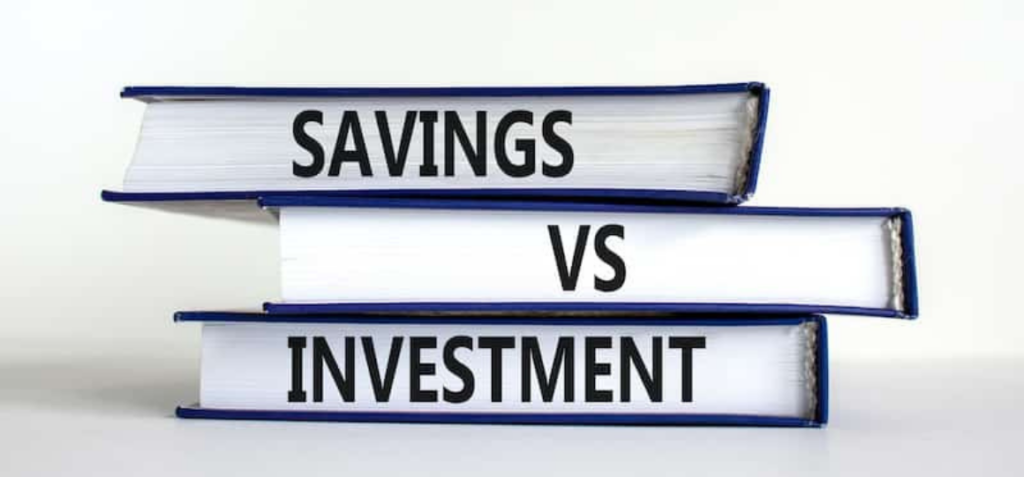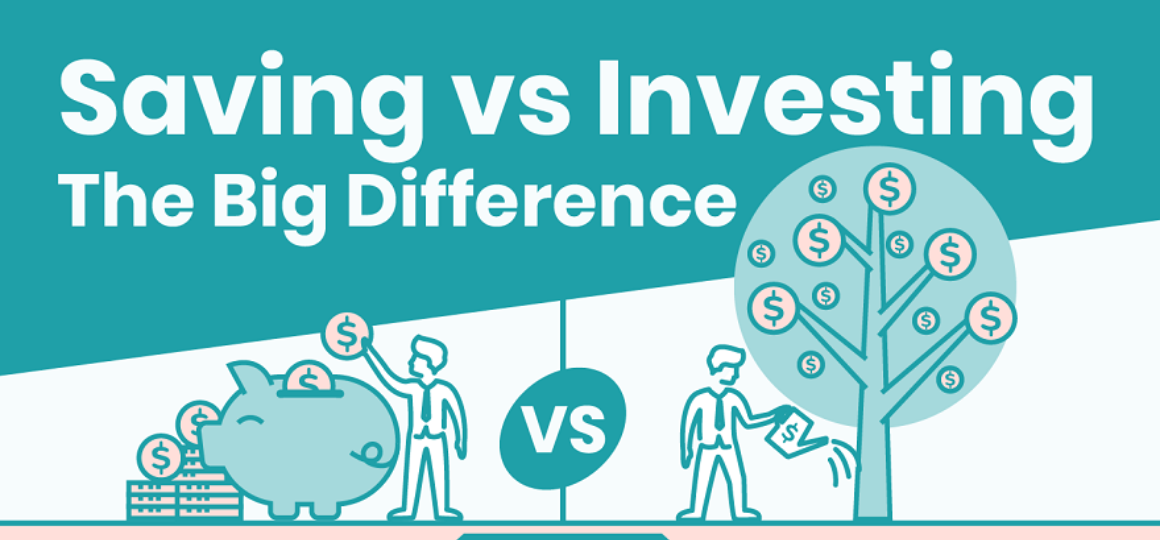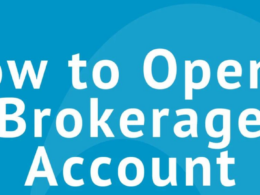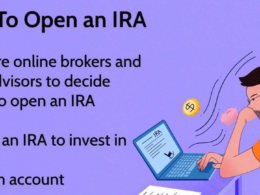Table of Contents
Saving vs. Investing: An Overview
Knowing the contrast between saving and investing is key for financial security and a prosperous future. While people sometimes mix up these terms, they mean different things. Both saving and investing are important parts of managing money, and getting started early is smart for building a solid financial foundation.
This article explains saving and investing, their advantages and disadvantages and provides examples to clarify these ideas.
KEY TAKEAWAYS
- Saving money involves keeping it safe for future use, ensuring it’s there when needed and unlikely to lose its value.
- Investing involves taking chances but also offers the opportunity to earn more in return.
- Investing involves taking chances but also offers the opportunity to earn more in return.
- Saving and investing are both important parts of managing your money.
What Is Saving?
People save money for buying things and emergencies. Saving is an important part of managing money. It’s like putting your money in a piggy bank, but instead of a piggy bank, you can use a savings account or a certificate of deposit (CD) that earns extra money over time. You might save up for things like getting a new phone, going on vacation or having money aside for unexpected bills.
Saving is a good way to reach short-term goals and be ready for surprises, like needing to fix your car or pay for medical expenses. By saving money regularly, you can build up a safety net that helps you handle tough situations. Saving usually has low risk, meaning your money is safe, but you might not earn much extra money through interest.
Tip: In simple terms, short-term means about a year or less. When you’re thinking about when you’ll need your money, what you’ll use it for, and how safe or risky your plans are, it’s important to remember this time frame.
Example
A simple way to save money is to put some of your allowance or paycheck into a savings account every month. For instance, if you aim to save $1,000 for a new laptop in ten months, setting aside $100 monthly can help you achieve your goal without borrowing money or paying interest on a loan or credit card.
BEST Brokers For Day Traning
Discover the Best Low-Cost Online Brokers for Fast and Reliable Trading! We’ve Analyzed each one’s Advantages and Disadvantages to Help You Choose the Right One for Your Day Trading Requirements.
You can set up automatic transfers to save money regularly without remembering to do it yourself.
Pros and Cons of Saving
Saving money has many benefits, like having money set aside for emergencies, being able to buy things you need in the short term, and keeping your money safe from loss. But there are downsides, too, like missing out on the chance to make more money with riskier investments. Also, if prices go up over time (called inflation), your savings might not buy as much in the future.
While saving is important, it’s also smart to combine it with other types of investing, like putting money into retirement accounts or buying stocks. This helps you have a well-rounded plan for your money.
Pros and Cons of Saving
Pros
- Creating a safety net for emergencies
- Helps with small goals such as buying groceries, getting a new phone, or going on a vacation.
- Very low chance of losing money. The FDIC insures money saved in banks.
Cons
- Significantly lower returns
- Could fall behind due to inflation
- Missing out on potential earnings by not investing in riskier but more profitable assets.
What Is Investing?
Investing means using your money to buy stocks, bonds, and mutual funds to make more money over time. Unlike saving, investing comes with some risk but can lead to bigger profits in the long run.
Investing is a way to work towards long-term money goals like saving for college, buying a home, or retiring. Since investing means taking on some risk, it’s important to pick investments that match your goals, how much risk you’re okay with, and how long you plan to invest. Usually, the longer you can invest, the more risk you can handle because you have time to handle any ups and downs in the stock market.
For example, if you want to invest in a big company like Apple, When you buy shares of its stock, you own a small piece of the company and can make money if Apple does well and its stock goes up.
But remember, investing doesn’t come with guarantees, and you could lose money. For instance, your investment could lose almost all its value if Apple goes out of business. That’s why it’s smart to spread your investments by putting money into different companies and industries. This helps lower your risk.
Example
Using a 401(k) retirement plan is a smart way to invest for the future. It means putting a part of your paycheck into a mix of stocks, bonds, and other investments to grow your savings over time.
Lots of employers offer 401(k) plans as a work benefit. You decide how much money you want to contribute, and sometimes, your employer adds more money. The money you contribute is invested in a mix of mutual funds, stocks, and bonds picked by the plan’s administrators.
The tax benefits are a big plus of using a 401(k) plan. The money you put in gets taken off your taxable income, so you pay less. Plus, your 401(k) investments can grow without you having to pay taxes until you take the money out.
Putting money into a 401(k) shows the importance of saving for retirement early. By spending regularly over time, you can greatly grow your retirement savings. It’s also important to pick a mix of investments that matches how much risk you’re okay with and what you want to do when you retire. And it’s smart to check and adjust your investments occasionally to ensure they’re still right for you.
Tip: Financial experts suggest not keeping too much of your investment money in cash because it can slow down your potential returns.
Pros and Cons of Investing
Investing can offer higher returns than saving money in a bank account. It allows you to increase your wealth over time by earning interest and reinvesting your earnings. Plus, it can help you reach big-money goals like retirement or buying a home.
But there are downsides to think about. Investing always comes with some risk, and there’s no guarantee you’ll make money or get back what you put in. Spreading your money out across different investments can help reduce risk. It’s important to research and understand the risks of different types of investments. Investing also takes patience and a long-term view, which can be tough when the market goes up and down or when you’re tempted to follow what everyone else is doing to try to make quick money.
Pros and Cons of Investing
Pros
- Chance to make more money than just saving
- Can assist in reaching big money goals
- Spreading out your investments can lower risk.
Cons
- Chance of losing money, especially in the short term.
- Needs self-control and dedication
- It might need more time to grow.
When to Save and When to Invest
Many people wonder whether they should save or invest their money. The answer depends on your situation, goals, and how much risk you’re comfortable with.
It’s smart to consider saving and investing even when you’re young and just starting out. Starting early can help you build wealth over time, and investing can be great for long-term goals like saving for college or retirement. When you’re young, you have more time to take risks and invest in things that might be risky. Even if you lose money in the short term, you have time to bounce back and benefit from investing for a long time. Investing early and regularly can grow your money faster over time.
As you get older and closer to retirement, experts say switching from risky investments like stocks to safer ones like bonds and cash is a good idea. That way, you’re less likely to lose money if the market goes down right before you retire.
Even younger people should save, especially for short-term goals like getting a new phone or going on vacation. Saving means putting your money in a safe account like a savings account or a certificate of deposit (CD). These accounts usually don’t make much money but have little risk. They’re good if you might need your money soon and can’t afford to lose any of it.

Investment: Before investing, ensure you have plenty of money for emergencies. This means having enough to cover your expenses for a few months and having enough in your savings account to pay for things like bills, rent, and groceries in the short term.
1. Which is riskier, saving or investing?
Ans: Saving usually has very low risk, while investing involves the chance of losing money. So, in general, investing is riskier than saving.
2. Why do some people prefer to save rather than invest?
Ans: Some folks might choose to save instead of investing for different reasons. Some like the security of having more money saved up in case of unexpected expenses or emergencies. Others have many short-term goals, like saving for a vacation or a house, and they feel better keeping that money safe in a low-risk savings account. Some folks might not know much about investing or feel uneasy about the risks involved, so they stick to saving. And finally, some people might not have enough money to invest after paying for their essential needs.
3. How much money should be saved vs. invested?
Ans: The right balance between saving and investing depends on your money goals, how much risk you’re okay with, and your situation. A general rule is to save enough money to cover your living expenses for three to six months in case of an emergency and have enough for short-term needs like bills. Whatever’s left over can be invested. The exact amount to save or invest will differ for everyone based on how old you are, how much you make, any debts you have, and your long-term money plans.
4. Why do some people fail at investing?
Ans: Many folks find investing hard for a few reasons. One is not knowing enough or having enough experience, which can lead to making bad choices. Also, emotions like fear or wanting to make quick money can make people act without thinking and lose money. Doing well with investing means thinking long-term, being disciplined, and being patient – even when the market is up and down, which can be tough.
The Bottom Line
Saving and investing are both important for managing money well. Saving gives you a safety net and lets you reach short-term goals, while investing can make more money in the long run and help with long-term goals. However, investing also has the risk of losing money. Both ways have good and bad points, so finding the right mix that fits your money situation and goals is key. Ultimately, having a mix of saving and investing can grow your money, guard against financial surprises, and set you up for a strong financial future.
Trade on the Go. Anywhere, Anytime
Join one of the biggest crypto exchanges worldwide! With competitive fees and helpful customer support, you can trade securely. Plus, Binance tools make it easy to see your trade history, manage auto-investments, and view price charts, all with no fees. Sign up for free and join millions of traders and investors in the global crypto market.










